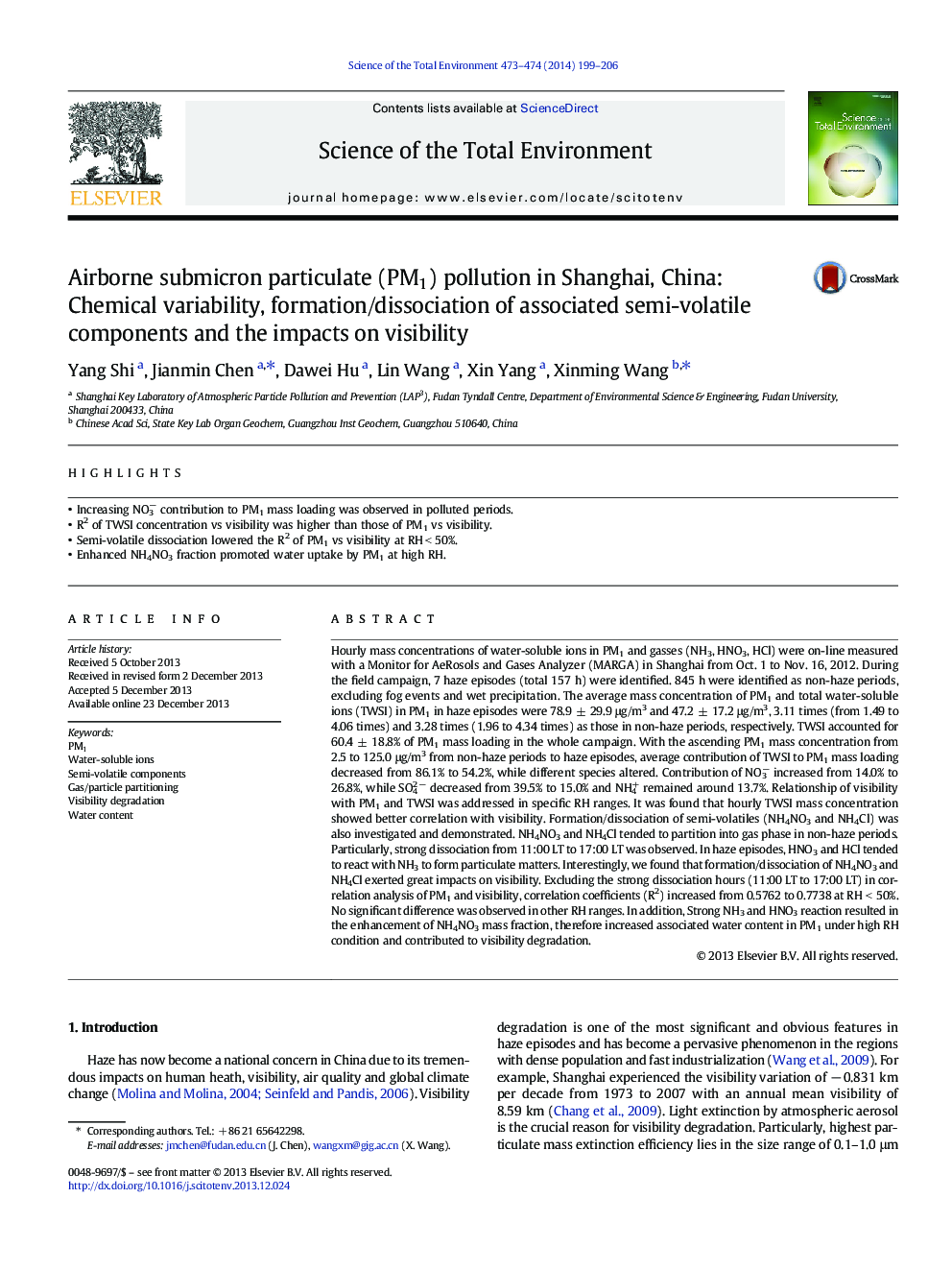| کد مقاله | کد نشریه | سال انتشار | مقاله انگلیسی | نسخه تمام متن |
|---|---|---|---|---|
| 6331638 | 1619791 | 2014 | 8 صفحه PDF | دانلود رایگان |

- Increasing NO3â contribution to PM1 mass loading was observed in polluted periods.
- R2 of TWSI concentration vs visibility was higher than those of PM1 vs visibility.
- Semi-volatile dissociation lowered the R2 of PM1 vs visibility at RHÂ <Â 50%.
- Enhanced NH4NO3 fraction promoted water uptake by PM1 at high RH.
Hourly mass concentrations of water-soluble ions in PM1 and gasses (NH3, HNO3, HCl) were on-line measured with a Monitor for AeRosols and Gases Analyzer (MARGA) in Shanghai from Oct. 1 to Nov. 16, 2012. During the field campaign, 7 haze episodes (total 157 h) were identified. 845 h were identified as non-haze periods, excluding fog events and wet precipitation. The average mass concentration of PM1 and total water-soluble ions (TWSI) in PM1 in haze episodes were 78.9 ± 29.9 μg/m3 and 47.2 ± 17.2 μg/m3, 3.11 times (from 1.49 to 4.06 times) and 3.28 times (1.96 to 4.34 times) as those in non-haze periods, respectively. TWSI accounted for 60.4 ± 18.8% of PM1 mass loading in the whole campaign. With the ascending PM1 mass concentration from 2.5 to 125.0 μg/m3 from non-haze periods to haze episodes, average contribution of TWSI to PM1 mass loading decreased from 86.1% to 54.2%, while different species altered. Contribution of NO3â increased from 14.0% to 26.8%, while SO42 â decreased from 39.5% to 15.0% and NH4+ remained around 13.7%. Relationship of visibility with PM1 and TWSI was addressed in specific RH ranges. It was found that hourly TWSI mass concentration showed better correlation with visibility. Formation/dissociation of semi-volatiles (NH4NO3 and NH4Cl) was also investigated and demonstrated. NH4NO3 and NH4Cl tended to partition into gas phase in non-haze periods. Particularly, strong dissociation from 11:00 LT to 17:00 LT was observed. In haze episodes, HNO3 and HCl tended to react with NH3 to form particulate matters. Interestingly, we found that formation/dissociation of NH4NO3 and NH4Cl exerted great impacts on visibility. Excluding the strong dissociation hours (11:00 LT to 17:00 LT) in correlation analysis of PM1 and visibility, correlation coefficients (R2) increased from 0.5762 to 0.7738 at RH < 50%. No significant difference was observed in other RH ranges. In addition, Strong NH3 and HNO3 reaction resulted in the enhancement of NH4NO3 mass fraction, therefore increased associated water content in PM1 under high RH condition and contributed to visibility degradation.
Journal: Science of The Total Environment - Volumes 473â474, 1 March 2014, Pages 199-206